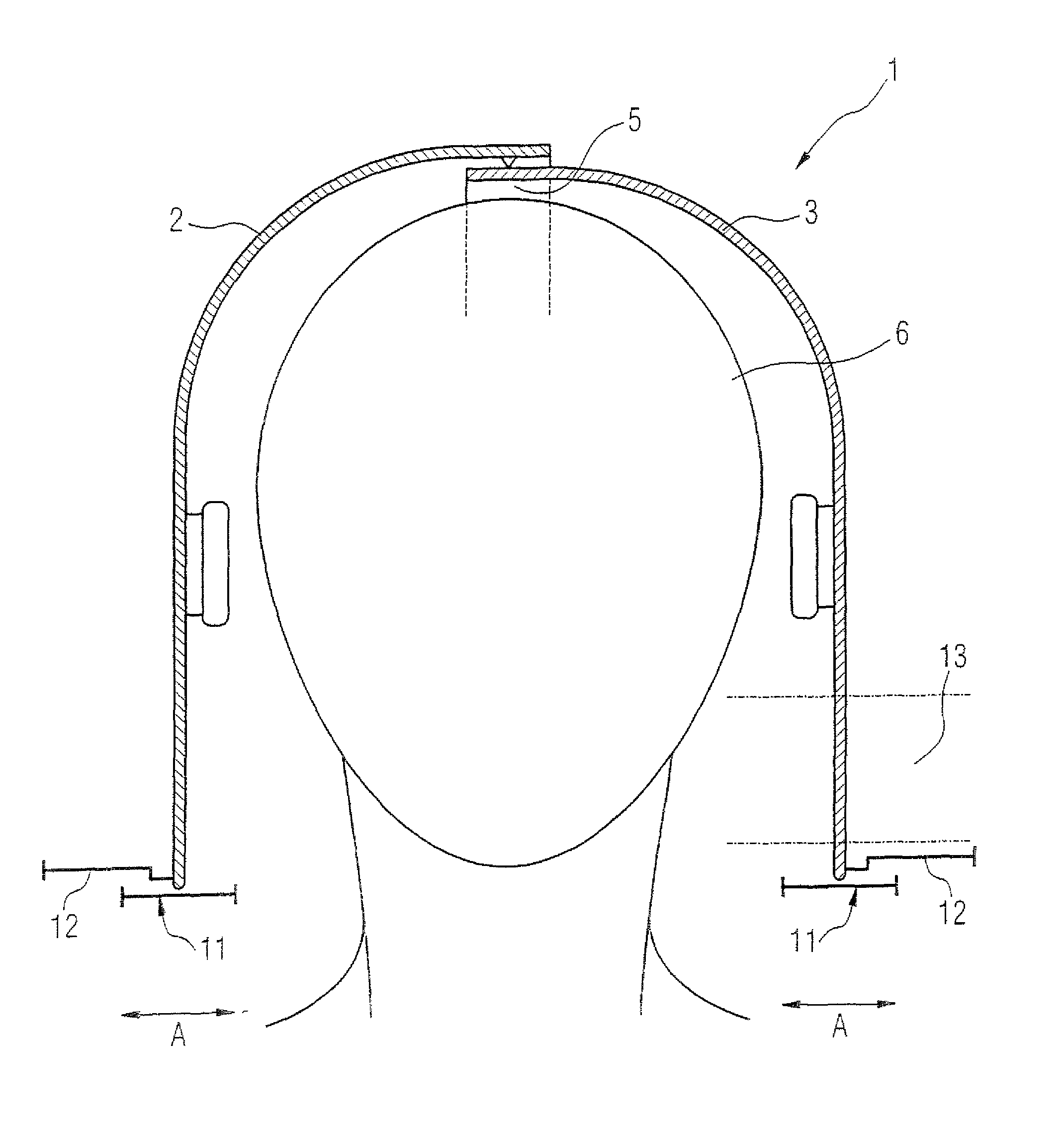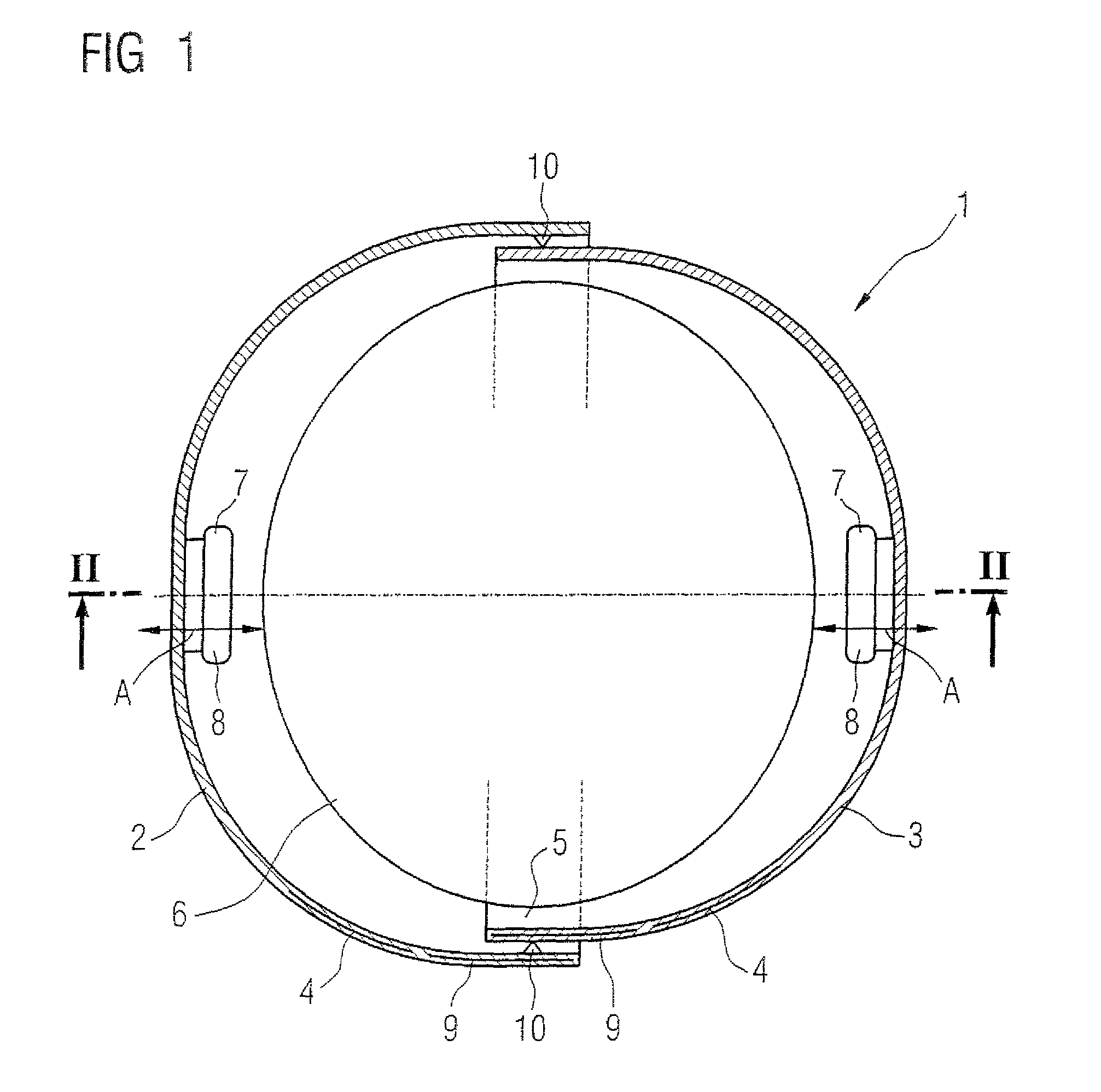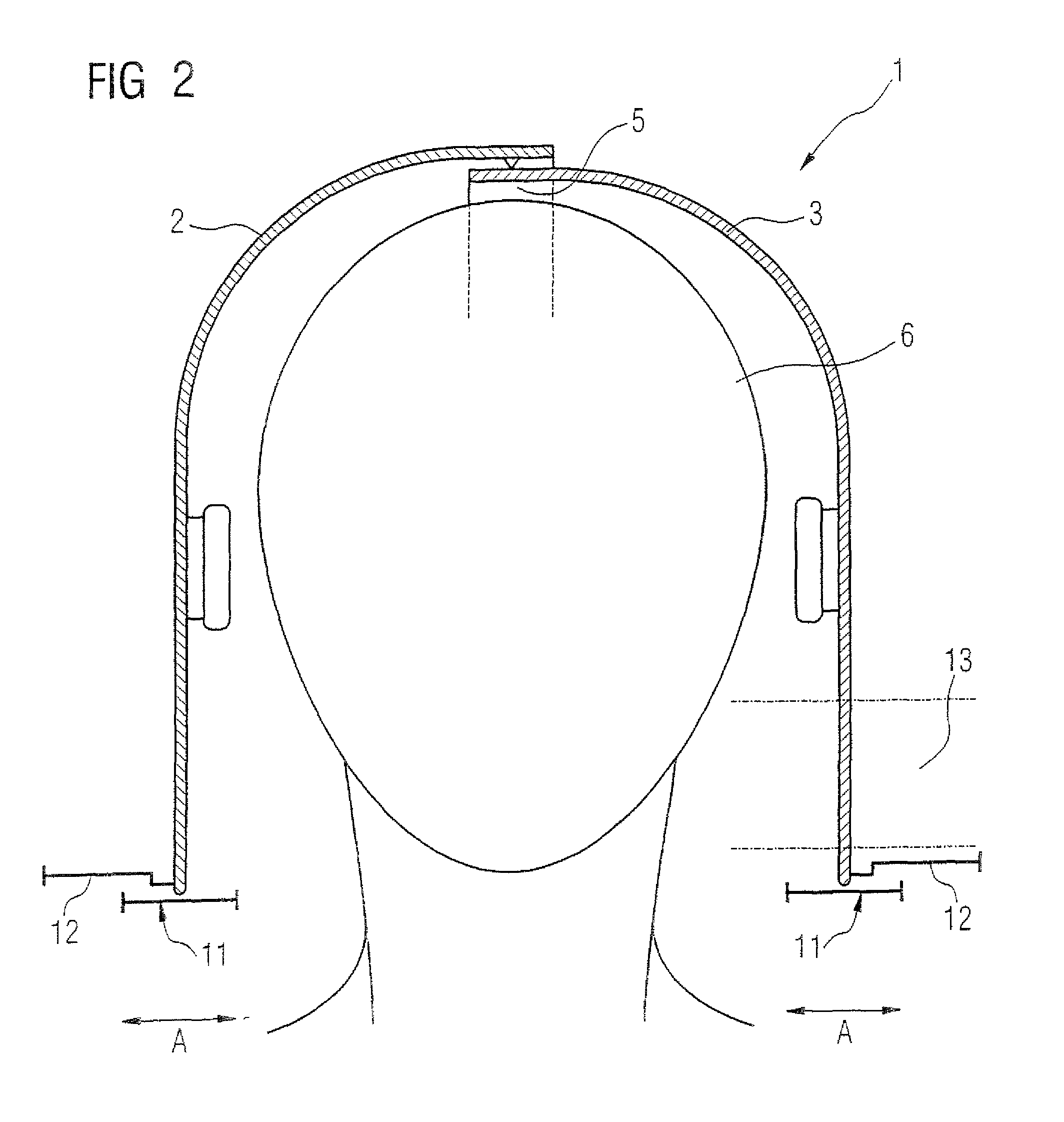MRI adjustable head coil
a magnetic resonance device and adjustable head coil technology, applied in the field of magnetic resonance device head coil arrangement, can solve problems such as poor signal-to-noise ratio, and achieve the effect of improving the signal-to-noise ratio
- Summary
- Abstract
- Description
- Claims
- Application Information
AI Technical Summary
Benefits of technology
Problems solved by technology
Method used
Image
Examples
first embodiment
[0036]FIG. 1 shows a vertical section through a head coil arrangement 1 according to a The arrangement 1 has a housing formed by a left housing part 2 and a right housing part 3. The housing parts 2 and 3 are guided in a linear guide (not shown in detail) and can therefore be linearly moved toward each other in the transverse direction of the head, as is indicated by arrow A. Displacement of the housing parts 2 and 3 toward each other is possible by way of manual actuators (not shown in detail), for example a slide or a hand wheel coupled via a gear or screw mechanism. Individual coils 4 that are integrated in the housing parts 2 and 3 are provided which are only partially indicated in FIG. 1.
[0037]The right housing part 3 is designed so it may be introduced into the left housing part 2, whereby an overlapping region 5 is produced. The internal volume of the local coil arrangement 1 becomes smaller by the amount of this overlapping region 5. It is consequently possible to adjust th...
second embodiment
[0042]FIG. 3 shows a vertical section through a head coil arrangement 14 according to a In this case the housing is divided into an upper housing part 15 and a lower housing part 16. The housing parts 15, 16, as indicated by arrow B, can be moved toward each other in the lengthwise direction of the head. For this purpose the housing parts 15, 16 are guided by means of linear guides (not shown in detail) here as well. Again, upon movement of the housing parts 15, 16 toward each other an overlapping region 17 is produced by which the internal volume of the head coil arrangement 14 is reduced, so adjustment to a head 6 (that is shown only schematically) is made possible.
[0043]FIG. 4 shows a vertical section through a head coil arrangement 18 according to a third exemplary embodiment. Here four housing parts 19 that each substantially cover a quarter of the head 6 are provided and these may each be moved in the transverse direction of the head 6, as indicated by arrow C, and in the len...
fourth embodiment
[0045]FIG. 5 shows a vertical section through a head coil arrangement 23. An upper housing part 24 and a lower housing part 25 are again provided here, it being possible for the housing parts 24, 25 to move toward each other in the lengthwise direction of the head 6, as symbolized by the arrow E. In this embodiment the housing parts 24 and 25 have substantially rigid housing part regions 24a, 25a and flexible housing part regions 24b and 25b. The flexible regions 24b and 25b are produced for example from a flexible plastics material. It is also possible to use a viscofoam that allows the flexible regions 24b and 25b to automatically adjust to the shape of the head 6. In this example however press-on elements 26 of which only the basic structure is shown are provided, which may be designed, for example, pneumatically, as air cushions or a spring. The press-on elements 26 press the flexible housing regions 24b and 25b along the arrow F onto the head 6, it being possible to achieve a r...
PUM
 Login to View More
Login to View More Abstract
Description
Claims
Application Information
 Login to View More
Login to View More - R&D
- Intellectual Property
- Life Sciences
- Materials
- Tech Scout
- Unparalleled Data Quality
- Higher Quality Content
- 60% Fewer Hallucinations
Browse by: Latest US Patents, China's latest patents, Technical Efficacy Thesaurus, Application Domain, Technology Topic, Popular Technical Reports.
© 2025 PatSnap. All rights reserved.Legal|Privacy policy|Modern Slavery Act Transparency Statement|Sitemap|About US| Contact US: help@patsnap.com



